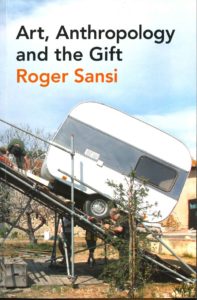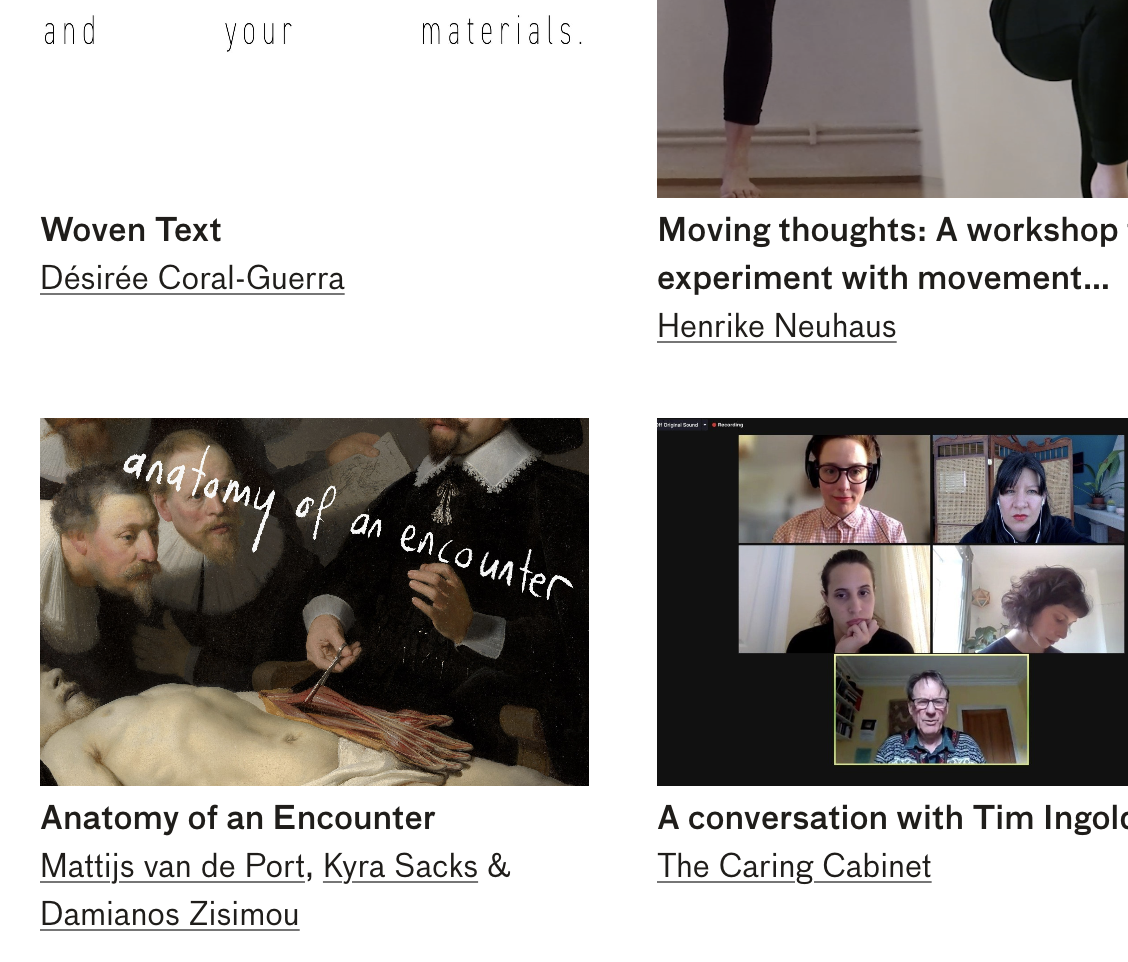1: Sources
There are two core readings for this module that we ask all to study: First, Linda Tuhiwai Smith’s critical challenge to decolonize research,[i] which points back to what is known as the ‘ethnographic crisis’.
Second, there is Roger Sansi’s introduction to Art, anthropology and the gift,[ii] on how artists and ethnographers have been drawn toward each other, trying to find ways to create artistic works that are ethnographic, and vice versa. What is this landscape about?
We hope you will allow these texts to inspire your first exercise in this course!
Third, there‘s also a growing body of literature – and other types of work – that deals with the fields that we are trying to tie together, and which you may draw on in developing your work through this course. You will find some in the traveling library of works that we are building in a different post for reference – and to which you can contribute!
Also, if you find you have little background or knowledge in one of the fields (such as ethnography, arts or pedagogy), we recommend reading up a bit on each of them as we go.
[i] Linda Tuhiwai Smith, Decolonizing methodologies: Research and indigenous peoples (London: Zed Books, 1999).
[ii] Roger Sansi, Art, anthropology and the gift (London: Bloomsbury, 2015).
2: Task
- Find inspiration in some of the sources we are providing below. Particularly the two core readings, but you may also start browsing the literature in the traveling library on ethnography, social and site-specific arts, critical pedagogy.
- Based on any inspiration from these sources, make an encounter. Or, allow an encounter to happen. Encounter something in your near surroundings.
- Tell us about the encounter(s) by making a post. Use any form or media you like: Text, images, sound, film… (but also be critical of the effects of ‘documentation’)
- Comment on at least two other posts, so that we start a dialogue
Reflections on ‘not making a project’
As Linda Tuhiwai Smith points to, the critique of ethnography (the ethnographic crisis) has been about extractivism; the ‘extracting’ researcher is a researcher who needs something for their own practice or project; they go somewhere, find something, bring it back, publish it, and thereby also represent that place or that people and their stories. This raises a lot of questions, such as: What’s in all of this for the places / people / species encountered? Who is research for? Who owns research? Who has the right to represent someone’s life world?
To elaborate on these critical questions, we have experimented with how one place to start, might be to begin with the encounter (See also previous experiments with encounters in student / staff publications[i]). What is in the encounter? To engage with or meet something while being open, in the sense that you are not actually planning a specific outcome, such as a project or result. There might be an outcome, even a ‘project’ (whatever that is). But coming to a place to want something from it, need something from it, the people / places you meet will somehow tune into your needs, accepting or rejecting them. Exploring and experimenting with the encounter itself, could be a good place to start to create a different kind of research; one that does not make ‘a study of’, but engages with. How can we engage with Lesvos? Or other contexts and situations?
To engage with something, you also bring something of your own. Perhaps you bring a practice, or an activity, an interest, something you do. Maybe you can share something. Maybe you can show something. Maybe listen. Or maybe, as Trinh T. Minh-ha, the anthropological filmmaker, suggests, you may ‘speak nearby’; that is, not speak about (‘representation’), or speak on behalf of, not even speak to.[ii] But ‘speak nearby’. What kind of encounter might that be?
[i] Encounters: “Encounters through art, ethnography and pedagogy: Editorial # 1-3,” Arts Cabinet, 2022, https://www.artscabinet.org/encounters.
[ii] Trinh T. Minh-ha, Woman, native, other: Writing postcoloniality and feminism (Bloomington, Ind: Indiana University Press, 1989).
(See more references to Minh-ha’s concept of speaking nearby in the Traveling library)
(Image: Screenshot from the first Encounters student-staff publication)

(Image: “In the field”)
Your responding post
(Please also see ‘How to make a post”).
For your post, feel free to narrate your encounter the way you like. It might be interesting to tell us what you were inspired by, such as from one of the core readings, and how that translated into the encounter. Consider how you would like to narrate this; visually, words, sounds, moving image, text… And please remember it’s just to get started, we don’t expect anything finished. But we’d like to invite you to consider research as a way of encountering and engaging with. (This is also known as a performative research approach).
The paradox
Yes, it’s a paradox; even knowing you have to tell us a story afterwards is kind of a ‘project’. You may start thinking: “How can I document it? How can I satisfy the teachers, the course, the credits, the system…” And yes, all of it is there. But still, focussing on the encounter may invite other choices: If you don’t find it’s natural to take pictures as part of the encounter, don’t take pictures. If it’s not natural to take notes, don’t take notes. Just focus on encountering. Meeting something, letting that other person or place or thing meet you, talk to you, influence your attention. Later you may consider what you could share, and how. Perhaps not representing something else, but directing the camera, the attention, toward yourself in the encounter?



0 Comments